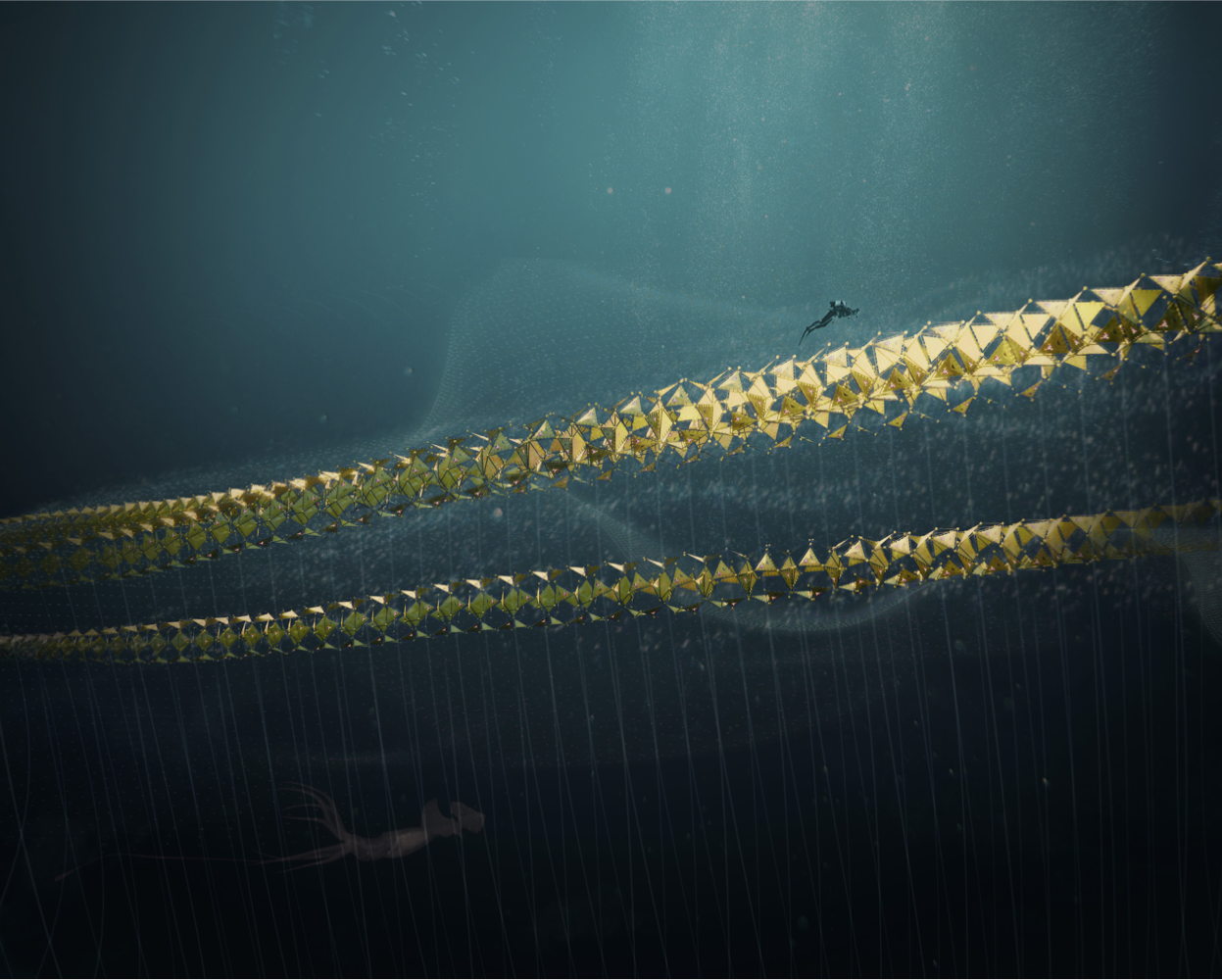
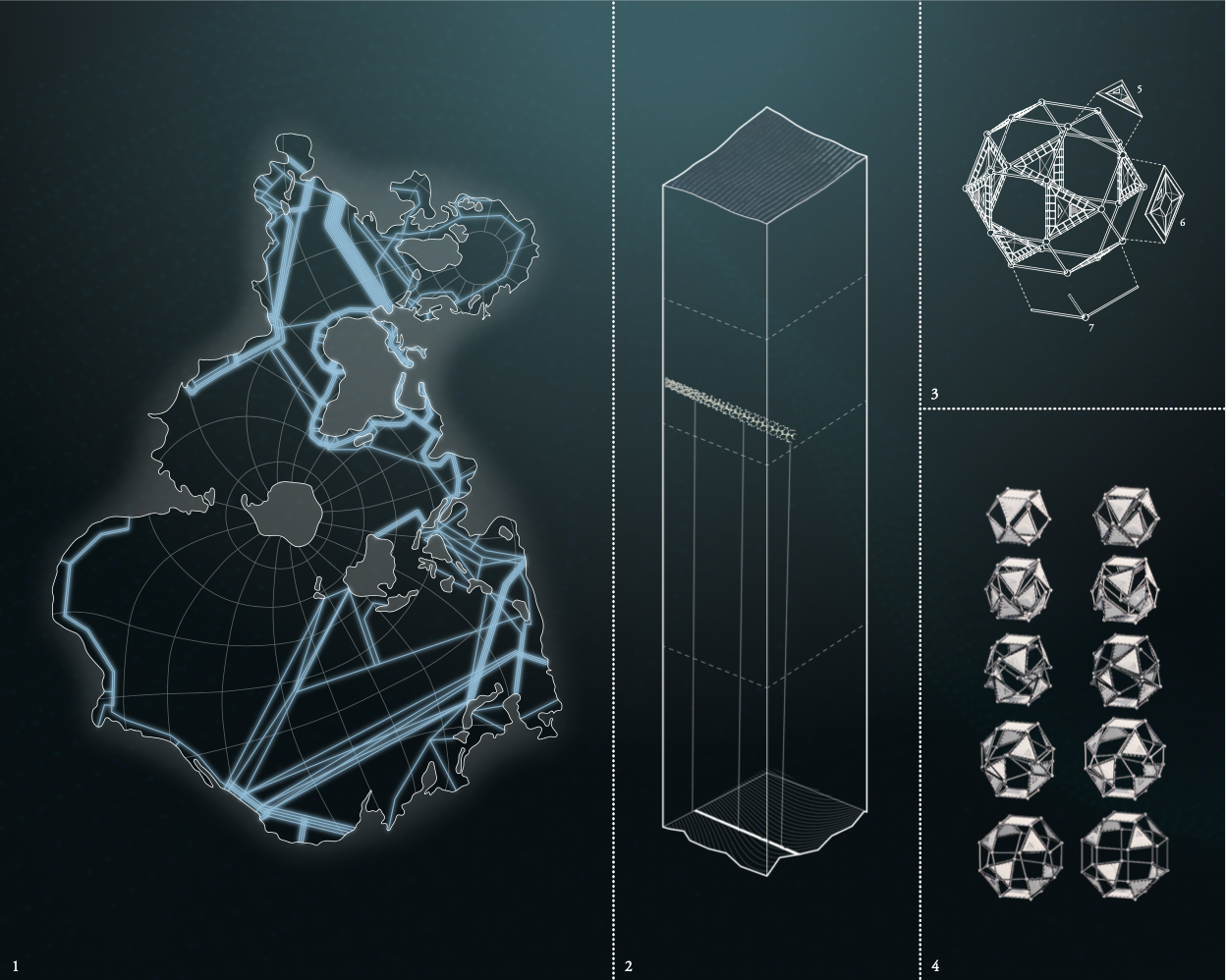
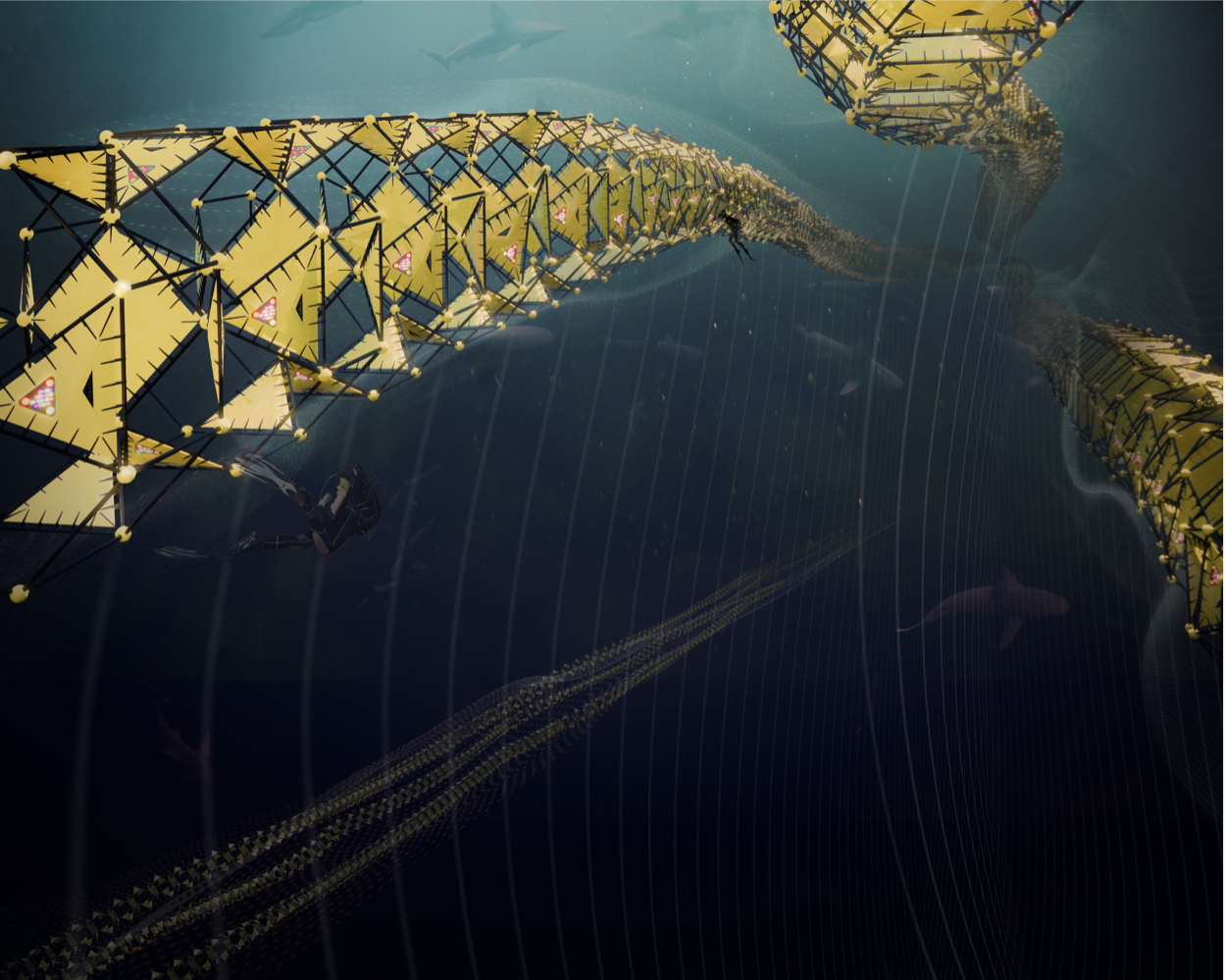
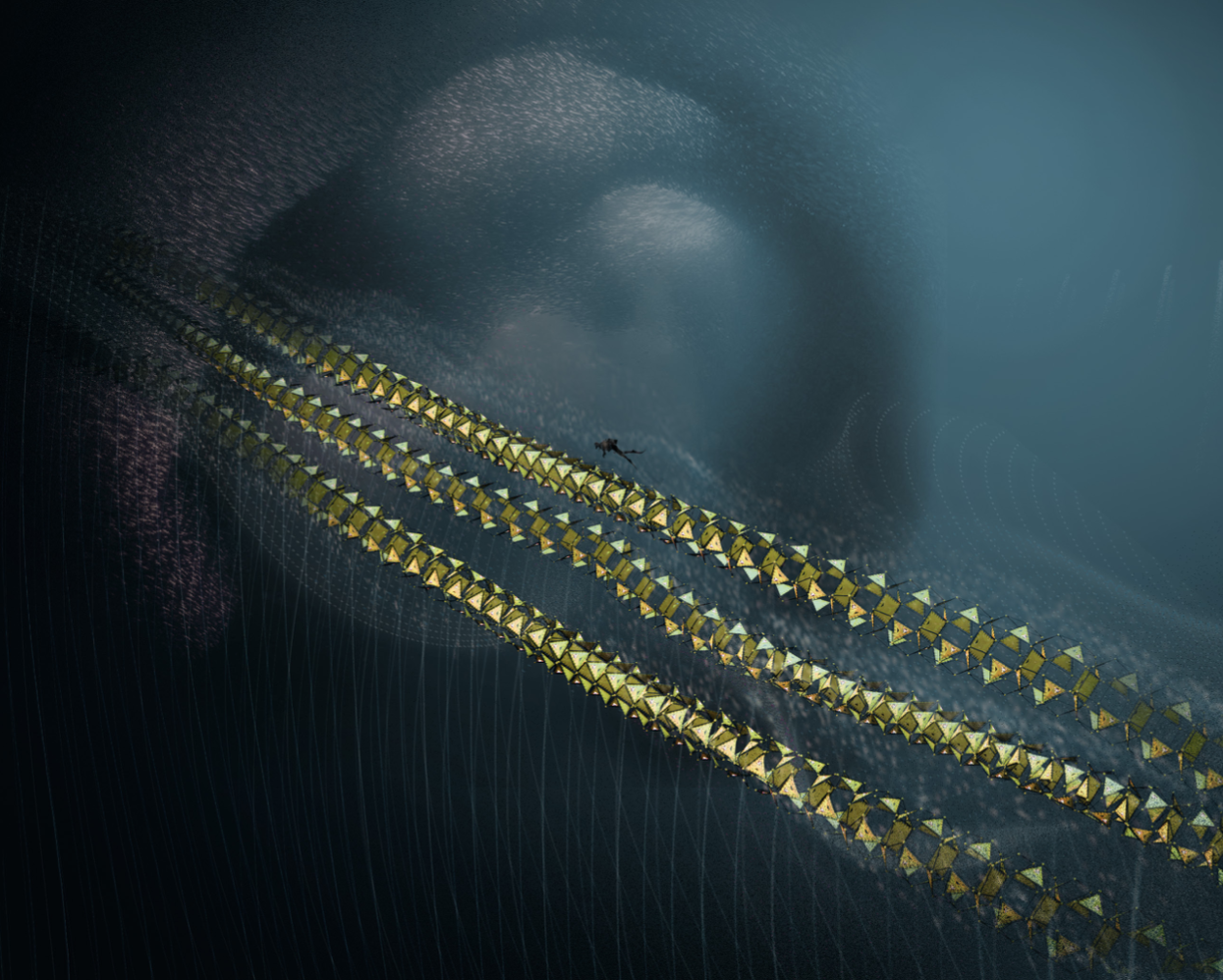
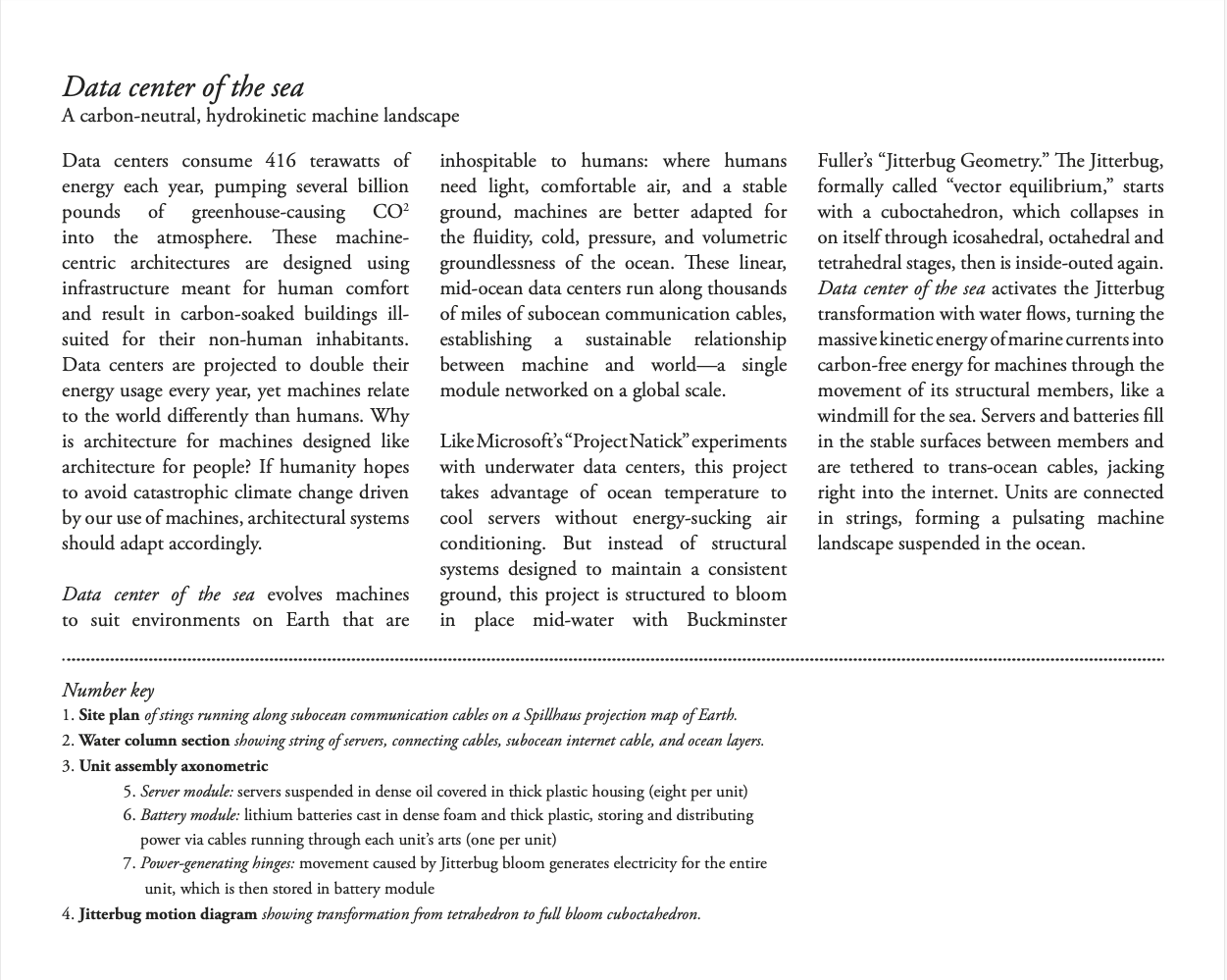

T. Craig Sinclair & Lauren Kirk, 2020
Honorable Mention, Arch Out Loud 2020.
Data centers consume 416 terawatts of energy each year, pumping several billion pounds of greenhouse-causing CO2 into the atmosphere. These machine-centric architectures are designed using infrastructure meant for human comfort and result in carbon-soaked buildings ill-suited for their non-human inhabitants. Data centers are projected to double their energy usage every year, yet machines relate to the world differently than humans. Why is architecture for machines designed like architecture for people? If humanity hopes to avoid catastrophic climate change driven by our use of machines, architectural systems should adapt accordingly.
Data center of the sea evolves machines to suit environments on Earth that are inhospitable to humans: where humans need light, comfortable air, and a stable ground, machines are better adapted for the fluidity, cold, pressure, and volumetric groundlessness of the ocean. These linear, mid-ocean data centers run along thousands of miles of subocean communication cables, establishing a sustainable relationship between machine and world—a single module networked on a global scale.
Like Microsoft’s “Project Natick” experiments with underwater data centers, this project takes advantage of ocean temperature to cool servers without energy-sucking air conditioning. But instead of structural systems designed to maintain a consistent ground, this project is structured to bloom in place mid-water with Buckminster Fuller’s “Jitterbug Geometry.” The Jitterbug, formally called “vector equilibrium,” starts with a cuboctahedron, which collapses in on itself through icosahedral, octahedral and tetrahedral stages, then is inside-outed again. Data center of the sea activates the Jitterbug transformation with water flows, turning the massive kinetic energy of marine currents into carbon-free energy for machines through the movement of its structural members, like a windmill for the sea. Servers and batteries fill in the stable surfaces between members and are tethered to trans-ocean cables, jacking right into the internet. Units are connected in strings, forming a pulsating machine landscape suspended in the ocean.